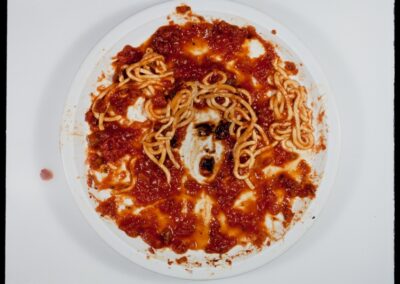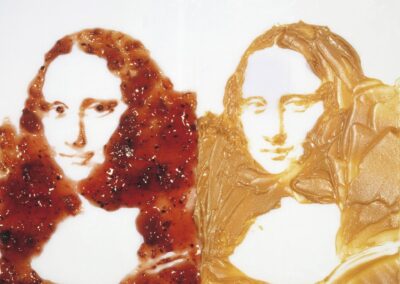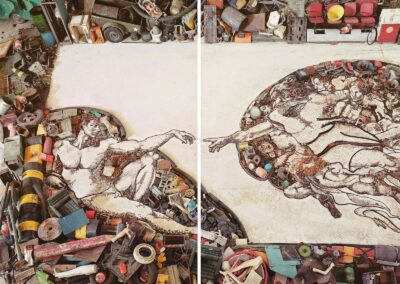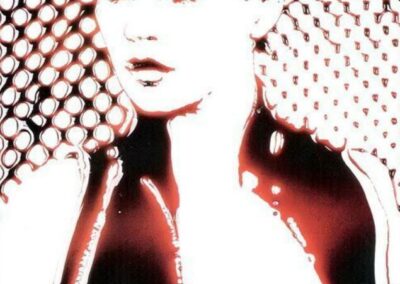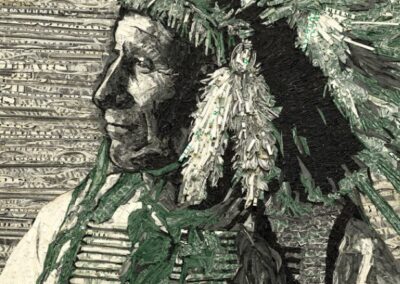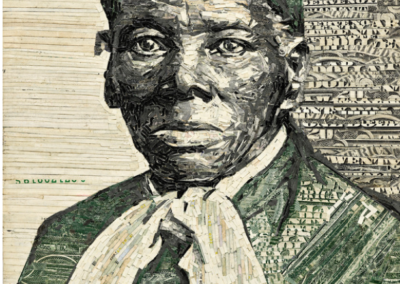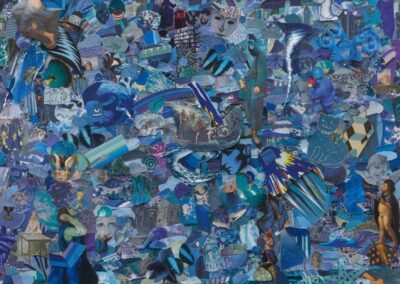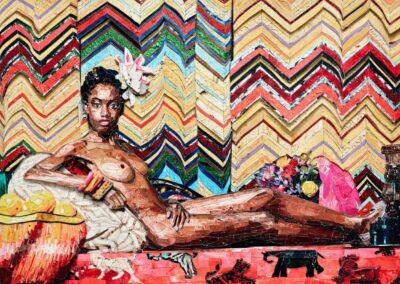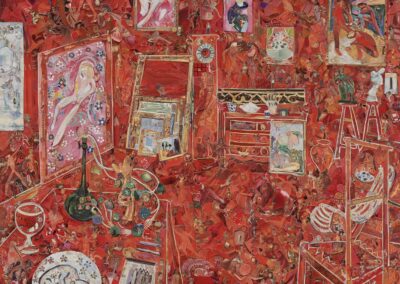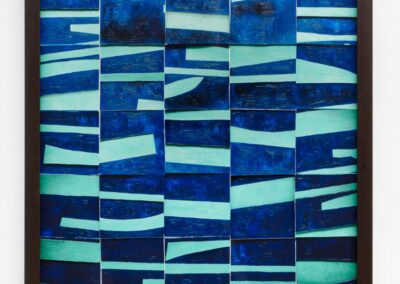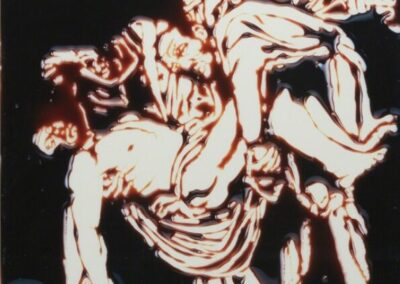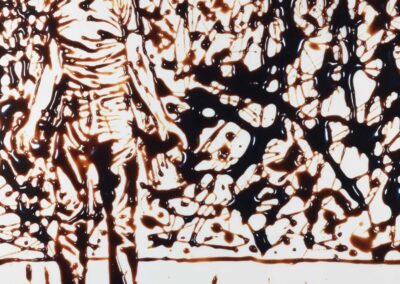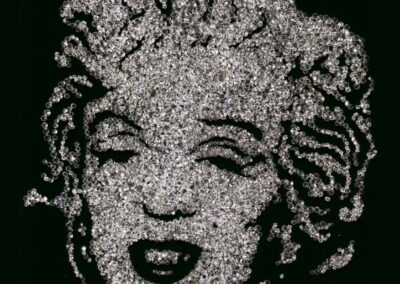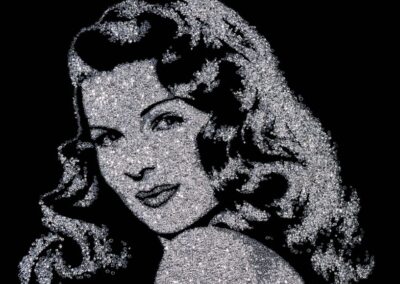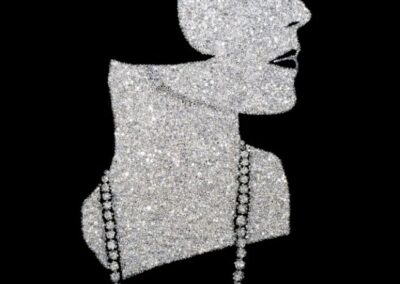The next Artist You Need To Know is Vik Muniz.
Muniz is a Brazilian mixed-media artist and photographer who recreates | re interprets | reimagines famous historical artworks and well known contemporary images from the socio political and pop culture sphere with unusual – very non traditional materials – and then documents the work as a photograph playing further on the proliferation of the original artwork and images. Chocolate, sugar, blood, trash (often referred to as ‘scraps’ in the titles of the works), diamond dust and assorted toys have been Muniz’ medium of choice in responding to artworks from Andy Warhol to Mark Rothko to Caravaggio to Jacques-Louis David.
He has also curated a number of projects and is a very public advocate for employing art as a means towards social change and engagement.
“Things look like things, they are embedded in the transience of each other’s meaning; a thing looks like a thing, which looks like another thing, or another. This eternal ricocheting of meaning throughout the elemental proves representation to be natural and nature to be representational.”
Vik Muniz was born in 1961 in São Paulo, Brazil. He has spoken about how in his schooling he had difficulty with writing and found visual communication to be a more effective and engaging means to communicate. This led to a math teacher suggesting to Muniz, when he was 14, to enter an art contest that he won and was awarded a scholarship to work in an art studio. Four years later he began working in the advertising industry in Brazil with a focus on billboards and maximizing their visibility (this early experience can surely be seen in his use and ideas about ‘famous’ images and his play with images that are known to viewers but that he then challenges this superficial interpretation in many ways).
He moved to the United States in the early 1980s : Muniz worked cleaning a supermarket parking lot while at night school to sharpen his English (which didn’t really happen in that class – he would become more fluent while taking carpentry and culinary classes later on) and also impressively learned Polish, Italian, Spanish and Korean. Again, this fluidity in many languages can be seen to inform his less than reverent – or multifaceted – approach to ‘famous’ art images from the official canon of art history and his interest in contesting meanings of these same images and their implicit cultural baggage.
Muniz was 28 when he had his first solo exhibit in 1989 and is both a prolific artist as well as being involved in curating a number of exhibitions and publications that intersect and enhance his agenda about both the social power – and responsibility – of artists.
From The Art Story : “With his recycling and manipulation of imagery, Muniz’s work questions the idea that artistic creativity involves coming up with a completely original idea and champions the idea of expounding upon the existent. Historical artworks, scenes from popular culture, iconic people from our communal consciousness, and cross sections of contemporary, global life highlighting lesser known social issues and marginalized communities are all prey to Muniz’s investigations into how we are affected by, and find meaning within, what we see.”
“A lot of the time you keep looking for beauty, but it is already there. And if you look with a little bit more intention, you see it.”
“My work questions the connecting elements between the image and the real, without discrediting either.”
In the documentary film Waste Land (2010), the narrative focuses on Muniz’s “work in Jardim Gramacho garbage dump. Throughout the film, Muniz works with the pickers to create a series of works using materials from the landfill, such as paper, plastic, and metal. The resulting large-scale photographs serve as a powerful commentary on the environmental impact of waste and the social injustice faced by waste pickers. This project not only showcases the incredible artistic talent of Vik Muniz, but also highlights the importance of using art as a tool for social and environmental activism.” (from here)
Muniz has exhibited extensively internationally (New York, London, Paris, San Francisco, and Tokyo being notable sites). His artworks can be found in the collections of the Art Institute of Chicago, the Los Angeles County Museum of Contemporary Art, the Metropolitan Museum of Art, the Museum of Modern Art, and the Museu de Arte Moderna de São Paulo. Muniz represented Brazil in 2001 at the Venice Biennale. A more extensive listing of his exhibitions can be seen here. A comprehensive accounting of his many awards that he’s earned can be seen here.
Much more about Vik Muniz’ art and career can be found at his site. There is also a very comprehensive entry for Muniz at The Art Story that can be seen here.



